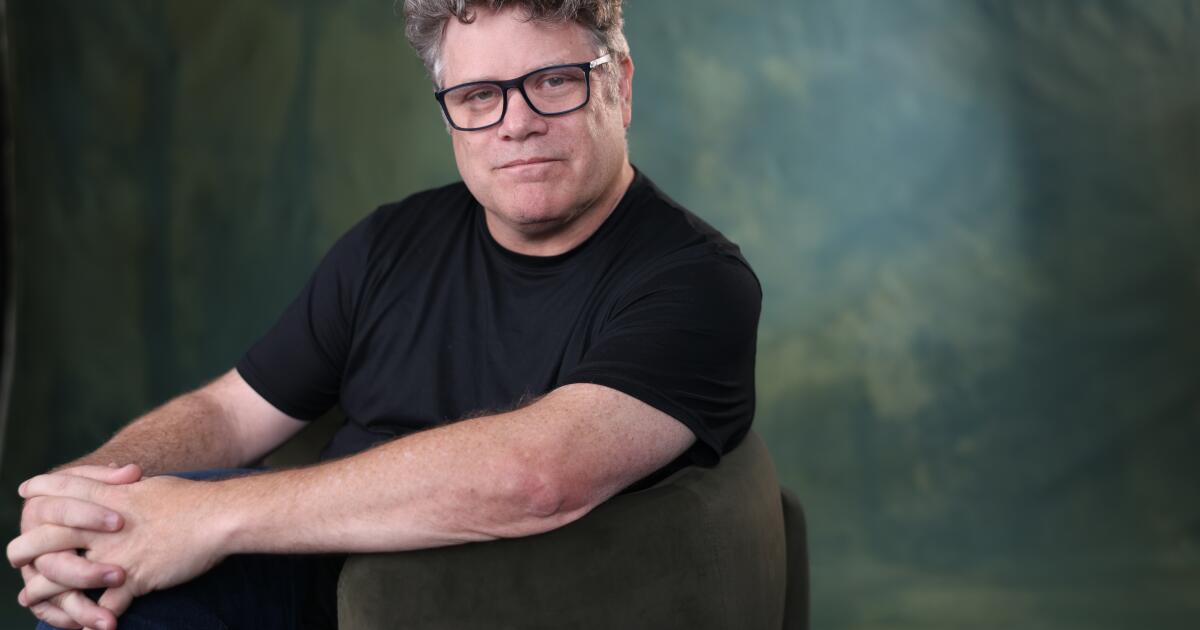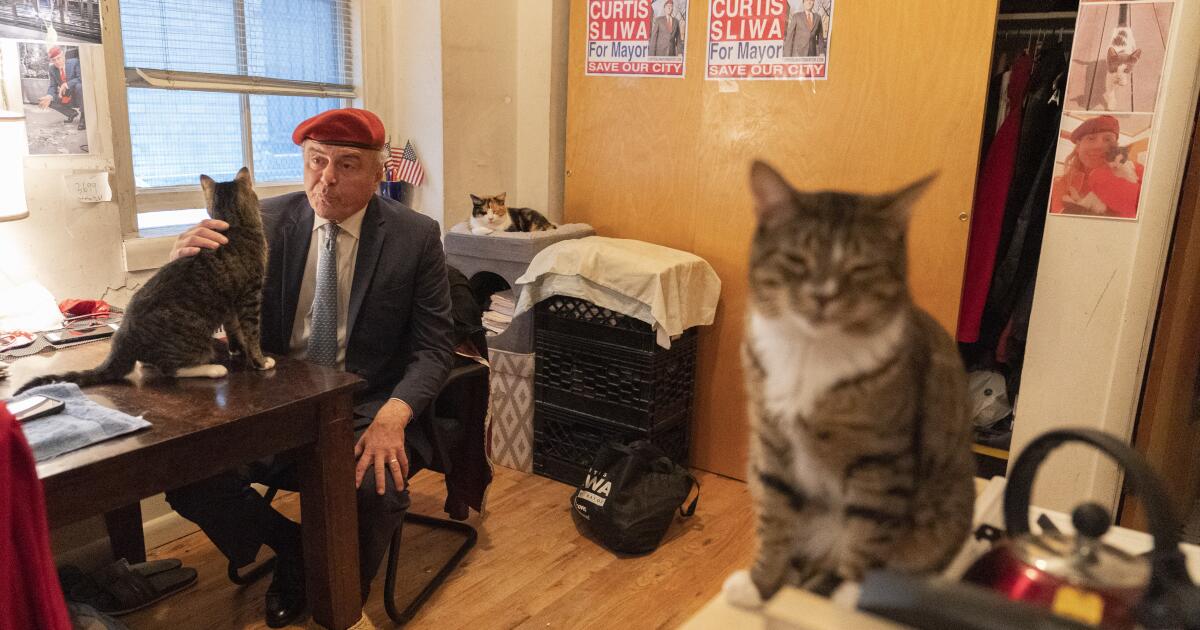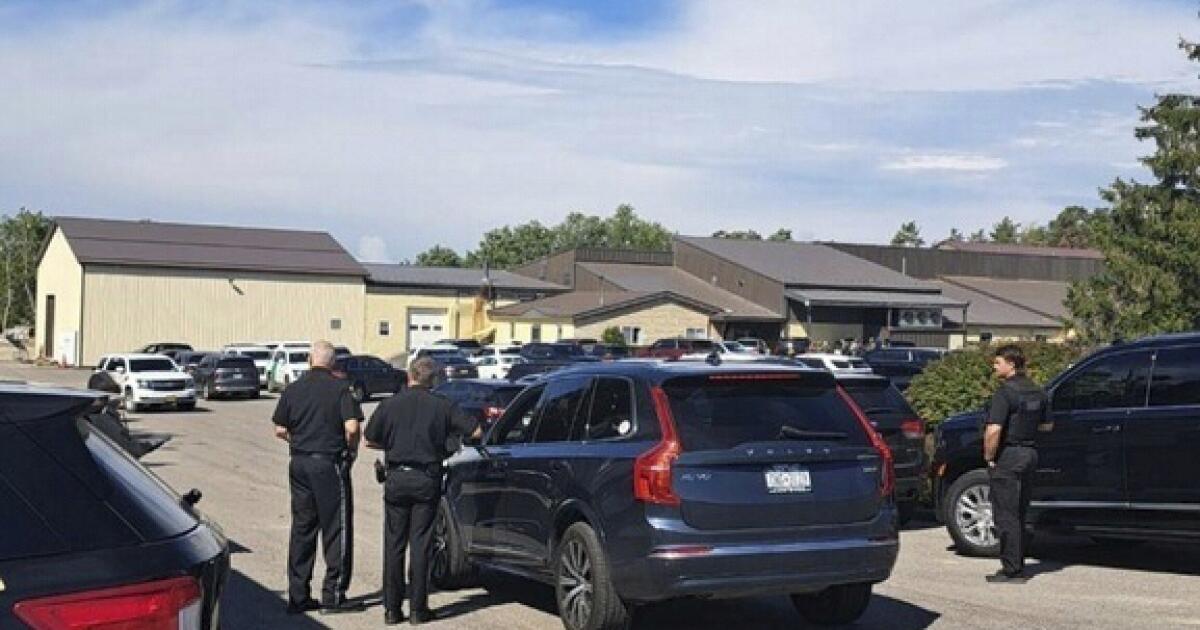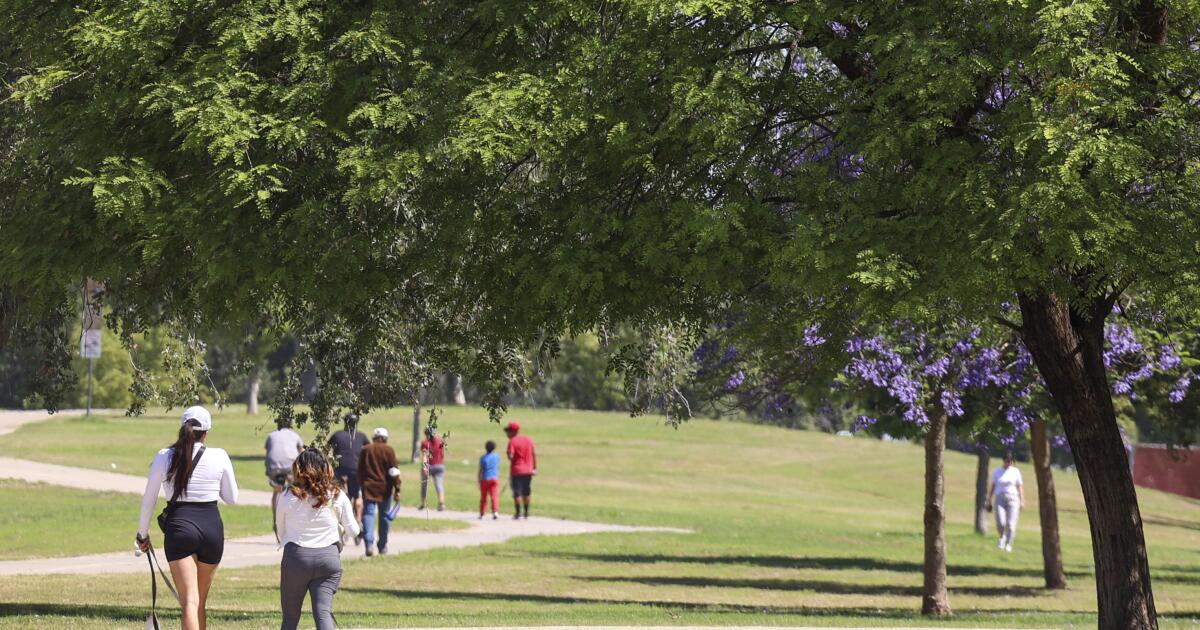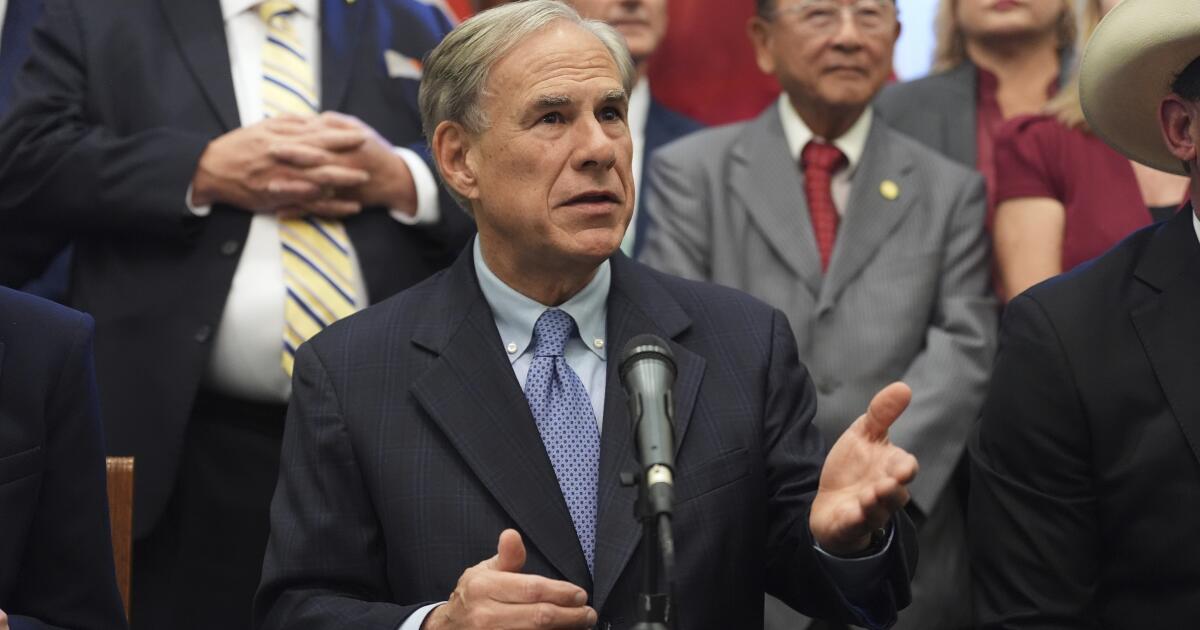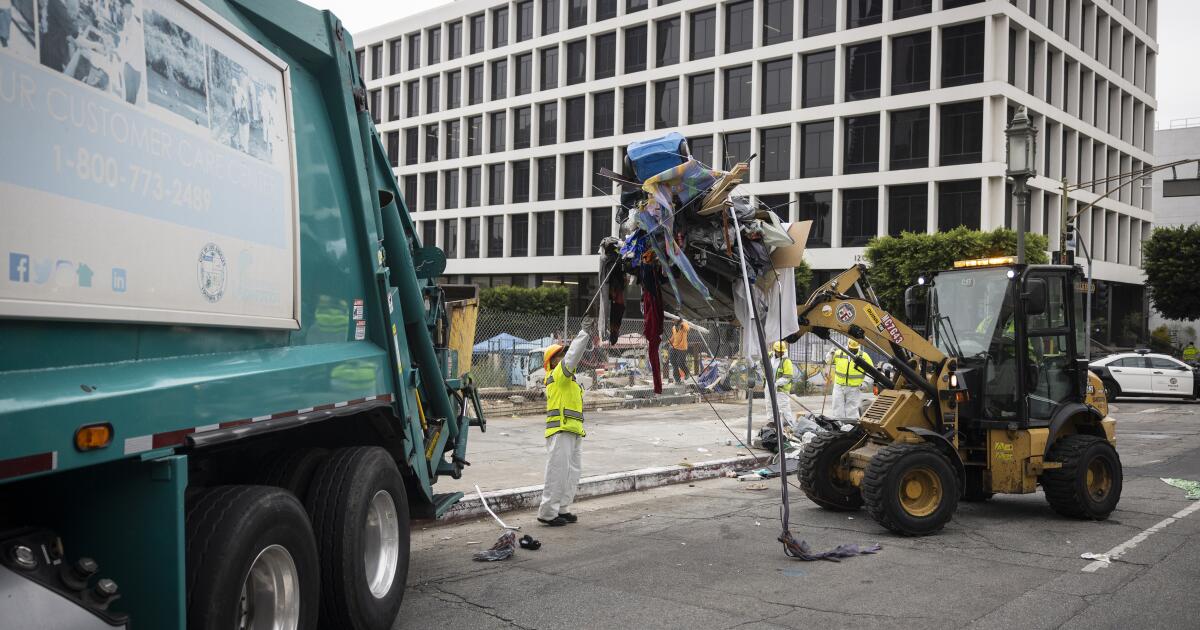What is Monica Rodriguez running for?
Good morning, and welcome to L.A. on the Record — our City Hall newsletter. It’s Noah Goldberg, with an assist from David Zahniser, giving you the latest on city and county government.
Los Angeles City Councilmember Monica Rodriguez does not run. As in, she is not a runner.
So why did she post an Instagram reel on a new personal account Tuesday of herself inside a Foot Locker, asking a salesperson for recommendations for a running shoe?
“I am an avid precinct walker,” Rodriguez said in an interview with The Times on Tuesday, hours after she posted the reel. “I needed a pair of new shoes — good supportive shoes for my run, and the announcements will be imminent.”
The North Valley councilmember bought the Cloud 6 On running shoes highlighted in the video. Now, rumors are flying around City Hall about what she may be considering running for — if not a marathon.
The three options being bandied about are a run to challenge Mayor Karen Bass in the upcoming 2026 election, a possible run for controller against Kenneth Mejia, or just a cheekily mysterious announcement of her reelection bid for her own council seat.
“It’s clear she’s weighing options which may include running for mayor against Mayor Bass,” said Sam Yebri, a lawyer who is board president of Thrive LA, a moderate PAC focused on quality-of-life issues in the city. (Yebri commented with a clapping hands emoji on Rodriguez’s Instagram post, and Thrive LA responded, “We’re ready!”)
Rodriguez would not say what her plans are for 2026, though she said that more social media posts will be forthcoming and that she is definitely running for something.
The councilmember has been a sharp critic of the mayor for years now. She has lambasted the mayor’s signature Inside Safe homelessness program, arguing that it lacks transparency. She has also repeatedly called for the council to end the mayor’s state of emergency on homelessness, even though she voted for it when it was first passed.
“We were supposed to get reports on what money was spent on. It took until 2024 that we were finally told how much Inside Safe was costing per room, per night,” Rodriguez said in an interview.
Rodriguez said she and other councilmembers had to fight to even get information released on where Inside Safe was conducting cleanup operations and where homeless residents were sent after the operations.
The councilmember also opposed the mayor’s ousting of Fire Chief Kristin Crowley following the January wildfires, saying that Bass used Crowley to deflect criticism of her own absence in Ghana at the start of the conflagrations. She also called on the mayor to reinstate Crowley.
“On Jan. 7, she was praising the fire chief and her response,” Rodriguez said at the time. “And then it appears, as the heat kicked up [over] her absence, she continued to try and attribute blame to someone else.”
Rodriguez was first elected in 2017 to the seventh district and was reelected in 2022.
If she were to announce a mayoral run, she would be Bass’ first major opponent.
There has also been speculation about Rick Caruso, the billionaire owner of the Grove shopping mall, potentially running against Bass again after losing to her last time, though he is also considering a bid for governor. Both he and Rodriguez are more conservative than Bass.
Rodriguez still has not filed for a reelection campaign for her seat, even as two others have joined the field.
“I know there were rumors she was considering a run for mayor. … So more or less, I’m seeing if she is going to run [for her council seat] or if she isn’t,” said Michael Ebenkamp, a former president of the North Hills Neighborhood Council who has filed to run for the District 7 council seat.
Rick Taylor, a political consultant, said that Rodriguez is interested in running for mayor but not likely to do it.
“She’s intrigued, don’t get me wrong. I just don’t think she’s going to pull the trigger,” he said.
A serious mayoral campaign is expensive, and Taylor said he doesn’t believe that Rodriguez can easily raise the $8 million to $10 million necessary to be a viable candidate.
“Monica is not Rick Caruso. She can’t put $100 million of her own in,” Taylor said. “I think most likely she will be councilwoman of the seventh district at the end of it all, but I think she’s keeping her options open.”
Newsletter
You’re reading the L.A. on the Record newsletter
Sign up to make sense of the often unexplained world of L.A. politics.
You may occasionally receive promotional content from the Los Angeles Times.
State of play
— SUPREME DECISION: The Supreme Court ruled Monday that U.S. immigration agents can stop and detain anyone they believe is in the country illegally, even if that suspicion is based solely on a person’s job, the language they speak or the color of their skin. The justices voted 6-3 to lift an L.A. judge’s order that had barred “roving patrols” from grabbing people off SoCal streets.
— FLAME OUT: It was a late night surprise: L.A.’s mayor, working with former State Assembly Speaker Bob Hertzberg, persuaded several lawmakers to carry a bill rewriting Measure ULA, the so-called mansion tax. Bass and Hertzberg said the changes would boost housing production while also cutting off support for an anti-tax measure being prepared for the ballot next year. But just as suddenly, Bass pulled the plug, saying the proposal needed more work. The plan is to bring it back in January.
— TAKE A (WAGE) HIKE: The business group seeking to repeal the hotel and airport workers’ minimum wage hike via a ballot measure failed to gather enough signatures, city officials said. The L.A. Alliance for Tourism, Jobs and Progress hoped to get voters to roll back the ordinance passed by the City Council in May but fell short of getting the measure on the ballot by 9,000 signatures.
— HOUSING BILL MARCHES ON: The controversial housing bill that would override local zoning laws and allow high-density buildings near public transit continued its march toward law Thursday. The California Assembly passed SB79 in a 41-17 vote. On Friday, the Senate approved it, 21 to 8. Now, it needs only the governor’s signature to become law.
— CHIEF UPDATE: Bass has hired Mitch Kamin to be her third chief of staff in just under three years. Kamin, a lawyer who has fought the Trump administration and provided legal services for underserved communities, will replace Carolyn Webb de Macias.
— UNCONVENTIONAL PRICE: The price tag for renovating the Los Angeles Convention Center has ballooned again. The City Council was informed this week that the project will cost $2.7 billion — an increase of nearly $500 million from six months ago.
— SaMo MONEY MO’ PROBLEMS: The city of Santa Monica could soon declare a fiscal emergency due to an ongoing budget crisis, due in part to more than $200 million in legal payouts related to an alleged sexual abuser who worked for the Police Department.
— LESS ‘LESS-LETHAL’: A U.S. district judge extended restrictions Tuesday that block federal agents and LAPD officers from targeting reporters and nonviolent protesters with crowd control weapons often known as “less-lethal munitions.”
— CLERKED IN: Bass appointed Patrice Lattimore to be the new city clerk. Lattimore has been a chief management analyst for the Office of the City Clerk since 2018, overseeing administrative, budget and personnel functions.
— LEADERSHIP MERGER: Two leadership programs that have produced civic leaders across the state are merging. Coro Southern California and Coro Northern California are becoming, simply, Coro California. Alumni include former Sen. Dianne Feinstein, Sen. Alex Padilla and L.A. City Councilmember Katy Yaroslavsky.
QUICK HITS
- Where is Inside Safe? The mayor’s signature program was in Council District 9 this week, near the Brotherhood Crusade and an elementary school, clearing an encampment that was a safety concern for people in the area, the mayor’s office said.
- On the docket next week: A report from the mayor on Lattimore’s appointment as city clerk will go before the government operations committee on Tuesday.
Stay in touch
That’s it for this week! Send your questions, comments and gossip to [email protected]. Did a friend forward you this email? Sign up here to get it in your inbox every Saturday morning.


